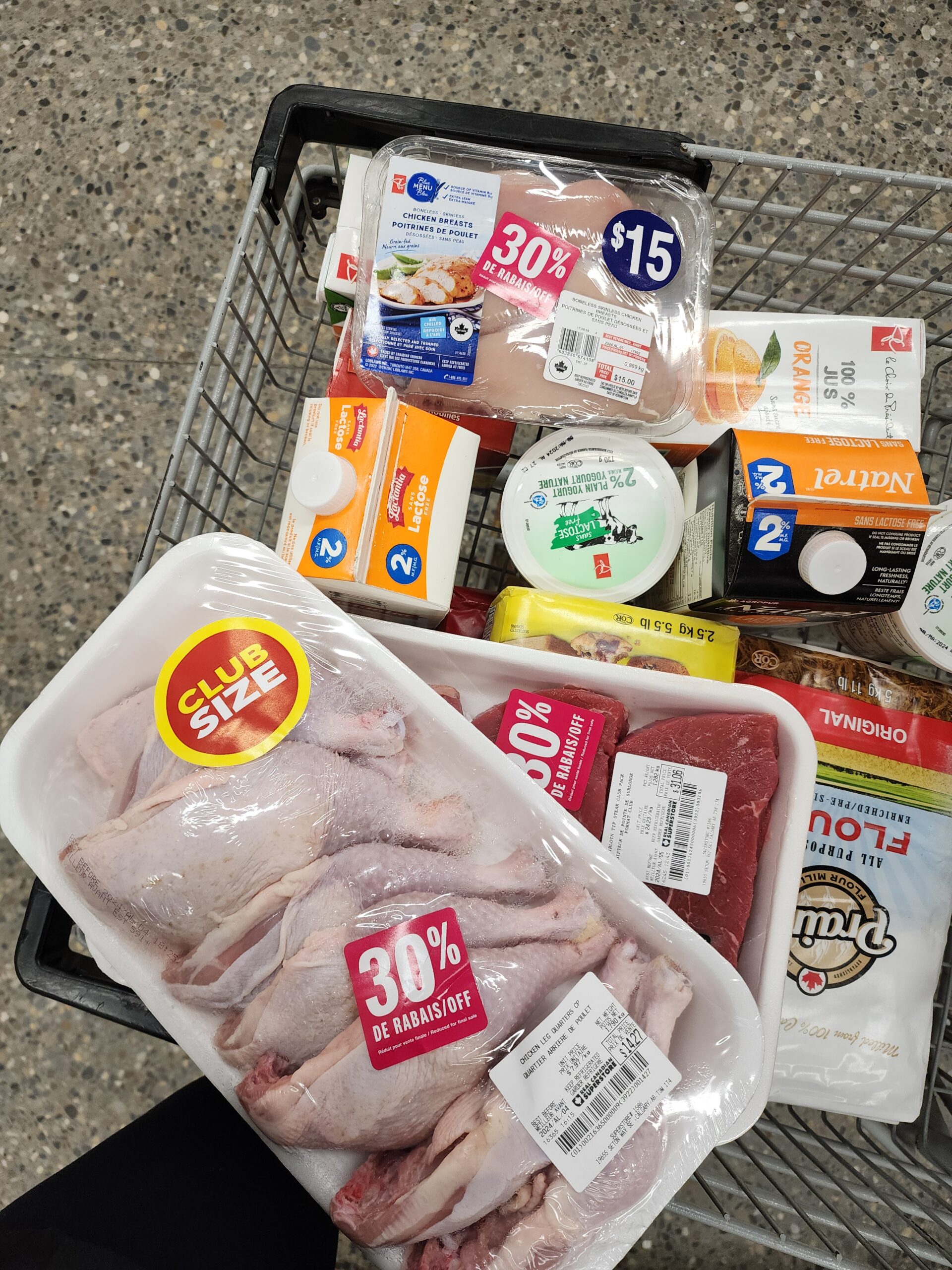In this post, I am sharing over 10 ways to save money when buying food at the grocery store.
You might also be interested in reading my other post where I share 10 easy ways to cut down on food waste.
#1 Don’t go to the store.
Every time you go to the store, you risk falling victim to impulse buying or finding “great deals”.
#2 Make a list and stick to it.
If you know you won’t do that, you can order online and either pick it up at the store or have it delivered.
#3 Look for actual great deals.
One dollar off per pound isn’t a deal, nor is saving 70 cents on a 5$ item. Look for substantial savings. I try and look for 40% off or more. I like to plan my grocery runs on Wednesday as I can access the flyers with sales starting the next day (Thursday) and plan where I want to go shopping and what I want to buy.
If you find a great sale on fruits but don’t know what to do with them right away (such as berries), you can put them in your freezer (after washing them!) and decide later what the plan is.
(Post on where to find great deals coming later!)

#4 Buy the 30% off meat packages.
No shame there, just cook it the same day or freeze it for later. It’s a great way to fill your freezer or use the meat for same-day batch meal prep. I find the best deals on Tuesday and Wednesday for those, right before the weekly sales change over.
#5 Buy in bulk or larger packages.
If you look at the unit price posted on the price tag (usually a price per ML, per gram or unit), the larger package is usually cheaper. If a smaller package is on sale, the unit price might be cheaper than a value pack/larger pack. Make sure to do the math before choosing which one you put in your cart. Larger packages are more expensive upfront but you will save money in the long run. You also need to have the space available to store a larger amount of food.
#6 Buy ingredients, not convenience food.
Buying “raw” ingredients is more work, but it is cheaper and more flexible. It allows you to make various recipes with the same ingredients, rather than having to purchase all products separately. You’ll also know all the ingredients you are putting in your body. Buy the oats and make those bars and cookies at home! It’s a good way to have total control on what’s in your pantry as you are building it and stocking items you know you use a fair amount of.
#7 Buy the no-name (store) brand
For pantry staples (flour, sugar, oats, etc), the store brand is a good option. Unless you are looking for specific products such as organic, glyphosate-free or gluten-free, the store brand is likely your best bet for saving money. Worth mentioning: Costco has incredible prices on large bags of flour ( all-purpose and bread flour).
#8 Don’t pay for food processing and process it yourself.
Sometimes, “making your own” is a better, and cheaper, idea. Plus, you get to control the ingredients. This is why I buy raw ingredients. For example, I make fruit popsicles at home(I will post about this later this spring)! Do it yourself, save money.
#9 Compare prices on pre-cut steaks and roasts.
Oftentimes you pay extra for steaks from the same cut as a roast. Buy a roast and cut your steaks at home instead.
#10 Buy extra stock
This has been sort of mentioned elsewhere but stock on non-perishable items and items that keep a while, if you can (honey, oil, pasta, oats, etc).
We all know prices are constantly going up. Stock up now at today’s price instead of buying tomorrow at tomorrow’s price.
#11 Know your prices
Keeping track of the average price for every item is great skill to have, as well as knowing what store is the cheapest so you can spot a good sale and save money.
It’s really hard to keep track these days, though, as everything is going up and changing. What used to be 5$ a pound is probably now 8$ a pound. The point is if you don’t know how much things cost, you won’t be able to spot a good sale.
#12 Meal prep a batch.
It takes the same time and amount of power to cook 2 chicken breasts or 10 chicken breasts in the oven. Stuff your oven full and make sure you are using your kitchen efficiently.
#13 Buy an Instant Pot.
It cooks fast, uses less power than a stove, is versatile and easy to use. I use mine to make soups all the time, as well as rice, hard-boiled eggs and chicken breasts.
I bought THIS ONE a few years ago.
